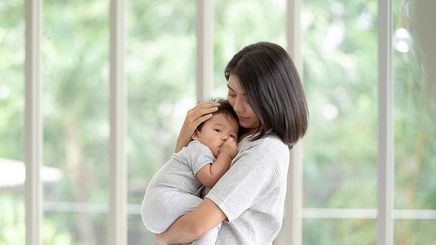
Pregnancy and childbirth change your body in numerous ways. One of the most noticeable differences is losing hair postpartum. According to the American Academy of Dermatologists, this condition is also called excessive hair shedding, and it’s a natural effect as your hormones stabilize.
Why Does Postpartum Hair Loss Happen?
You may have observed that you looked . Your skin was clearer and your hair was thicker. When you’re pregnant, you produce more estrogen than usual, which is the reason behind that sudden glow-up.
The hair growth cycle has four phases: anagen (growing), catagen (transition), telogen (resting), and exogen (shedding). Losing hair postpartum is scientifically called telogen effluvium. During pregnancy, estrogen boosts the anagen phase. However, according to the study “Alterations in Hair Follicle Dynamics in Women,” those levels drop after you give birth. The decline triggers the resting phase, leading to mass shedding soon after.
Around 40% to 50% of women are prone to losing hair postpartum. It occurs around four months after giving birth, with regular hair growth resuming two months later. Some women, however, can experience postpartum hair loss for up to a year. If you feel like your hair loss has been going on beyond the usual postpartum period, consult your dermatologist.
How Can You Manage Losing Hair Postpartum?
Because this type of is primarily hormonal, it’s not exactly avoidable. However, you can manage it until your hair growth cycle returns to usual. Here are some tips:
Get a haircut.
It’s difficult to pinpoint when “mom hair” became a bad thing. Perhaps because people often associate it with infamous reality stars. There is no specific style that defines a mom haircut. However, the term usually refers to . It is also related to how new moms chop their hair to more manageable lengths to get it out of the way.
Don’t be put off by this rep. Practicality isn’t a negative. Bobs or can be incredibly chic and . Plus, you don’t want a cumbersome length to weigh down your .
Give your hair a break.
This should go without saying. Postpartum women or breastfeeding mothers should skip any chemical treatments for safety reasons. While some specialized products are safe to use, treat this time as a vacation for your tresses. If you’re losing hair postpartum, you can also minimize blow-drying or flat-ironing your hair – pretty much anything that can add damage.
Manage your stress.
Telling a new mother to stop stressing out is pretty impractical. More than hair loss, there’s the postpartum adjustment, a crying and demanding newborn, and life in general. However, you should find an outlet for your anxiety. Make sure to incorporate some me-time in your day. Perhaps you can ask your friends and relatives to help you with the housekeeping. You can also pull out the Favorite Tita card and enlist them to babysit if you have older kids. Don’t feel guilty about taking that day off, mom.
Eating healthier and engaging in exercise (with your OB’s go-signal) can also help .
Try a volumizing shampoo.
According to the AAD, postpartum isn’t a true loss since your tresses will grow back. In the meantime, however, pump up what hair you have left with a volumizing shampoo. Use Dove Hairfall Rescue+ Keratin Tri-Silk Serum Shampoo. It has DynaZinc Complex to strengthen your hair from end to end.
The organization also recommends finding a product with biotin, which stimulates keratin production and boosts your hair growth rate. Sunsilk Strong & Long Shampoo has this plus aloe vera to nourish your hair and make it stronger and more resilient.
Losing hair postpartum is part of the beautiful experience of childbirth. It may be hard to think this way when you see all those hair strands on your pillow, but remember, it’s only temporary.